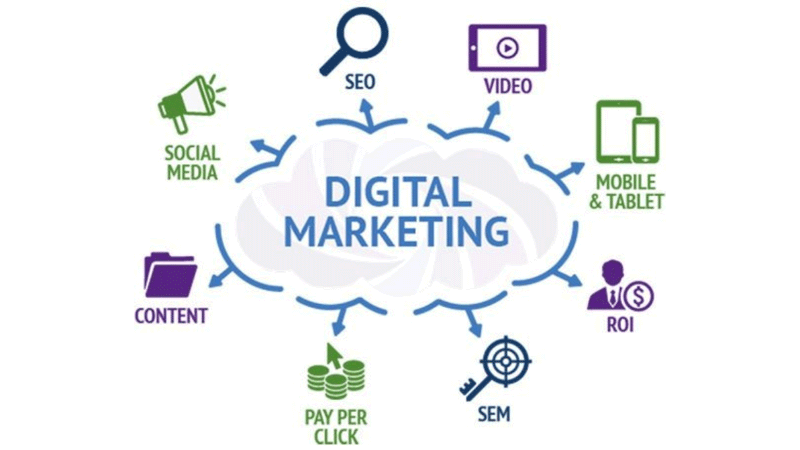A/B testing, also known as split testing, is a method used in digital marketing to compare and evaluate the performance of two or more variations of a marketing element, such as an advertisement, webpage, email, or landing page. It involves presenting different versions to separate segments of your audience and measuring their responses to determine which version performs better in achieving your desired goals.
The purpose of A/B testing is to make data-driven decisions by gathering empirical evidence about how different variations impact user behaviour and key metrics. It helps marketers optimize their campaigns, websites, or user experiences by identifying which elements or changes lead to improved performance, higher conversions, increased engagement, or other desired outcomes.
A/B testing is a crucial technique in digital marketing that helps you make data-driven decisions and optimize your campaigns or website for better performance. It involves comparing two or more versions of a marketing element or webpage to determine which one performs better in achieving your goals. By testing different variations and measuring their impact, you can gain valuable insights into your audience’s preferences, improve conversion rates, and maximize your marketing efforts.
Here’s an overview of the importance of A/B testing and some effective practices:
1. Objective decision-making:
A/B testing eliminates guesswork and biases by providing empirical evidence to support your marketing decisions. It enables you to make objective choices based on real user behavior and data, rather than relying on assumptions or opinions.
2. Optimization opportunities:
A/B testing allows you to continuously refine and optimize your marketing strategies. By identifying and implementing changes that lead to better results, you can enhance key performance indicators (KPIs) such as click-through rates, conversions, engagement, and ultimately, ROI.
3. Customer-centric approach:
A/B testing helps you understand your audience better. By testing different variations, you can uncover user preferences, behaviors, and expectations. This knowledge empowers you to tailor your marketing efforts to meet their needs, resulting in a more personalized and effective customer experience.
4. Increased engagement:
Testing different variations of content, messaging, or design elements can lead to increased user engagement. A/B testing allows marketers to discover what types of content or design elements generate more clicks, longer page visits, or higher interaction rates, thereby boosting overall engagement.
5. Cost-effective decision-making:
A/B testing enables marketers to test and evaluate potential changes or improvements without fully implementing them. This approach helps save time and resources by focusing efforts on elements that have proven to be effective through testing, reducing the risk of costly missteps.
Now let’s explore some best practices for conducting A/B tests effectively:
1. Define clear objectives:
Start by identifying the specific goals you want to achieve with your A/B test. Whether it’s increasing click-through rates, reducing bounce rates, or improving conversions, clearly define your objectives to measure success accurately.
2. Test one variable at a time:
To isolate the impact of each change, focus on testing one element or variable at a time. This could be a headline, call-to-action, layout, color scheme, or any other element you believe could impact user behaviour.
3. Develop hypotheses:
Formulate hypotheses based on your understanding of your audience, industry best practices, and data insights. These hypotheses will guide your test variations and predictions about their outcomes.
4. Split your audience:
Randomly divide your audience into two or more segments, ensuring they represent a statistically significant sample. One segment receives the original version (control), while the others receive the modified versions (variants) you want to test.
5. Run tests concurrently:
It’s important to run your A/B tests concurrently to minimize external factors that could influence the results, such as seasonality or market changes. This ensures that the differences observed in the test groups can be attributed to the variations being tested.
6. Monitor and measure:
Use reliable analytics tools to track and measure the performance of each variant. Key metrics may include conversion rates, bounce rates, time on page, or any other relevant KPIs. Analyze the data statistically to determine if the differences observed are statistically significant.
7. Iterate and scale:
Based on the results, implement the winning variant that performs better and iterate further to optimize it. Additionally, explore new variations and continue testing to achieve continuous improvement and better results over time.
Remember, A/B testing should be an ongoing process rather than a one-time event. It helps you refine your marketing strategies, understand your audience, and stay ahead of the competition in the ever-evolving digital landscape.
A/B testing allows marketers to experiment, learn, and optimize their marketing strategies based on real user behavior and data. It helps remove guesswork and biases by providing evidence-backed insights to make informed decisions, ultimately improving the effectiveness of digital marketing efforts.
Elevate Your Digital Marketing Strategy with A/B Testing. Discover the Benefits Today via CrazyWebDev Technologies!
Reference Image – https://www.simplilearn.com/history-and-evolution-of-digital-marketing-article


